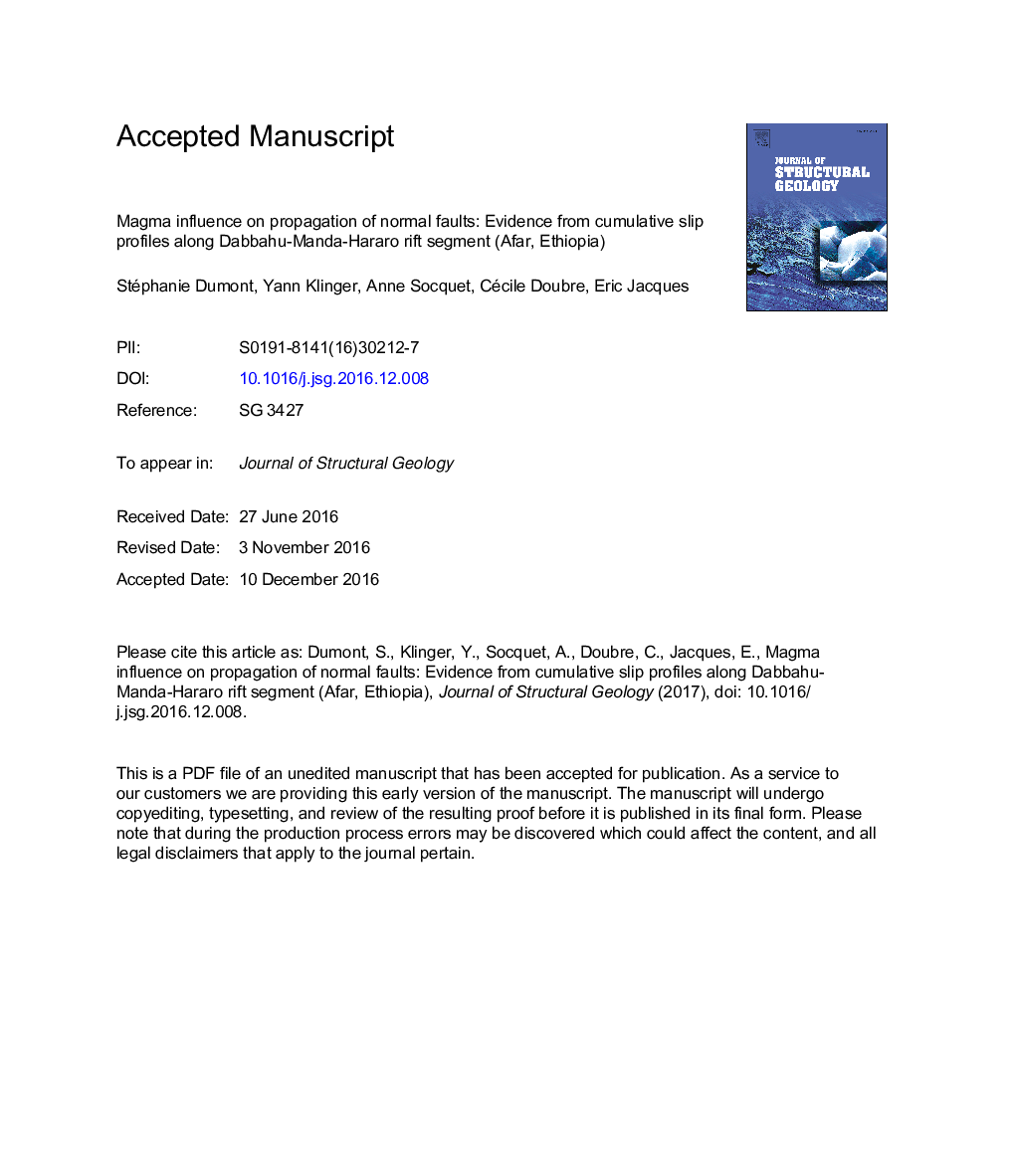| Article ID | Journal | Published Year | Pages | File Type |
|---|---|---|---|---|
| 5786359 | Journal of Structural Geology | 2017 | 36 Pages |
Abstract
Measuring displacement-length profiles along normal faults provides crucial information on fault growth processes. Here, based on satellite imagery and topography we analyze 357 normal faults distributed along the active rift of Dabbahu-Manda-Hararo (DMH), Afar, which offers a unique opportunity to investigate the influence of magmatism on fault growth processes. Our measurements reveal a large variety of slip profiles that are not consistent with elastic deformation. Their analysis contributes towards a better understanding of the lateral propagation of faults, especially when nucleation points and existence of barriers are included. Using the fault growth model of Manighetti et al. (2001), we determine the preferred direction of lateral propagation for each fault. Our results suggest that lateral propagation of faults is easier away from areas where magma has been stored for long time at crustal depth, and has thus modified the thermo-mechanical properties of the host-rock. However, these areas correspond also to areas where the initiation of fault growth appears as easiest along the rift. In combining these results with the analysis of rift width and the position of magma reservoirs along DMH rift, we show that fault growth keeps track of the magma presence and/or movement in the crust.
Keywords
Related Topics
Physical Sciences and Engineering
Earth and Planetary Sciences
Geology
Authors
Stéphanie Dumont, Yann Klinger, Anne Socquet, Cécile Doubre, Eric Jacques,
